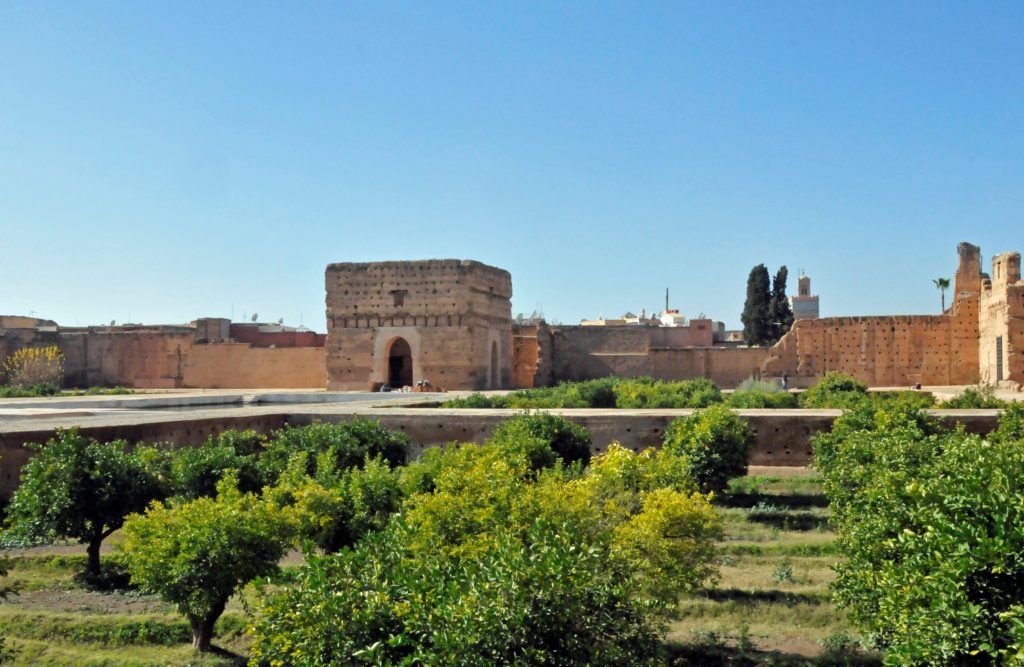
Just south of the famous central square in Marrakech, Morocco, are the ruins of El Badi, perhaps once the world’s most spectacular palace.
In 1578, Ahmad al-Mansur, a member of the Saadi dynasty that had ruled Morocco since 1549, became the ruler after his brother, the existing sultan, died in a victorious battle against the Portuguese, who had sought to bring Christianity to Morocco. The Portuguese were forced to pay enormous sums to al-Mansur to ransom their many important prisoners taken in what became known as the Battle of the Three Kings. Al-Mansur used the money to begin building a magnificent palace in Marrakech, his capital. The palace became known in Arabic as “El Badi,” “The Incomparable.” The El Badi palace, which took 25 years to complete, lived up to its name. Modeled on the Alhambra in Granada, the palace contained 360 rooms, a massive courtyard and a reflecting pool 300 feet by 60 feet. It included stables for the sultan’s horses and dungeons for his prisoners. The palace was adorned with marble from Italy, gold from Sudan and jade from China. Al-Mansur used the palace to host lavish receptions for ambassadors from Spain, England and the Ottoman Empire, displaying Moroccan power.
When al-Mansur died in 1603, the Saadi dynasty began a period of decline and lost power entirely to the Alaouites in 1649. Moulay Ismail ibn Sharif, an Alaouite sultan who began his reign in 1672, moved the Moroccan capital from Marrakech to Meknes and spent ten years destroying the El Badi palace, both to use its materials in his own palace and to destroy vestiges of the Saadis. Today, only remnants of El Badi remain, but they are an important destination for visitors to Marrakech, who can imagine the scale and grandeur of the once incomparable palace.
Comments are closed.